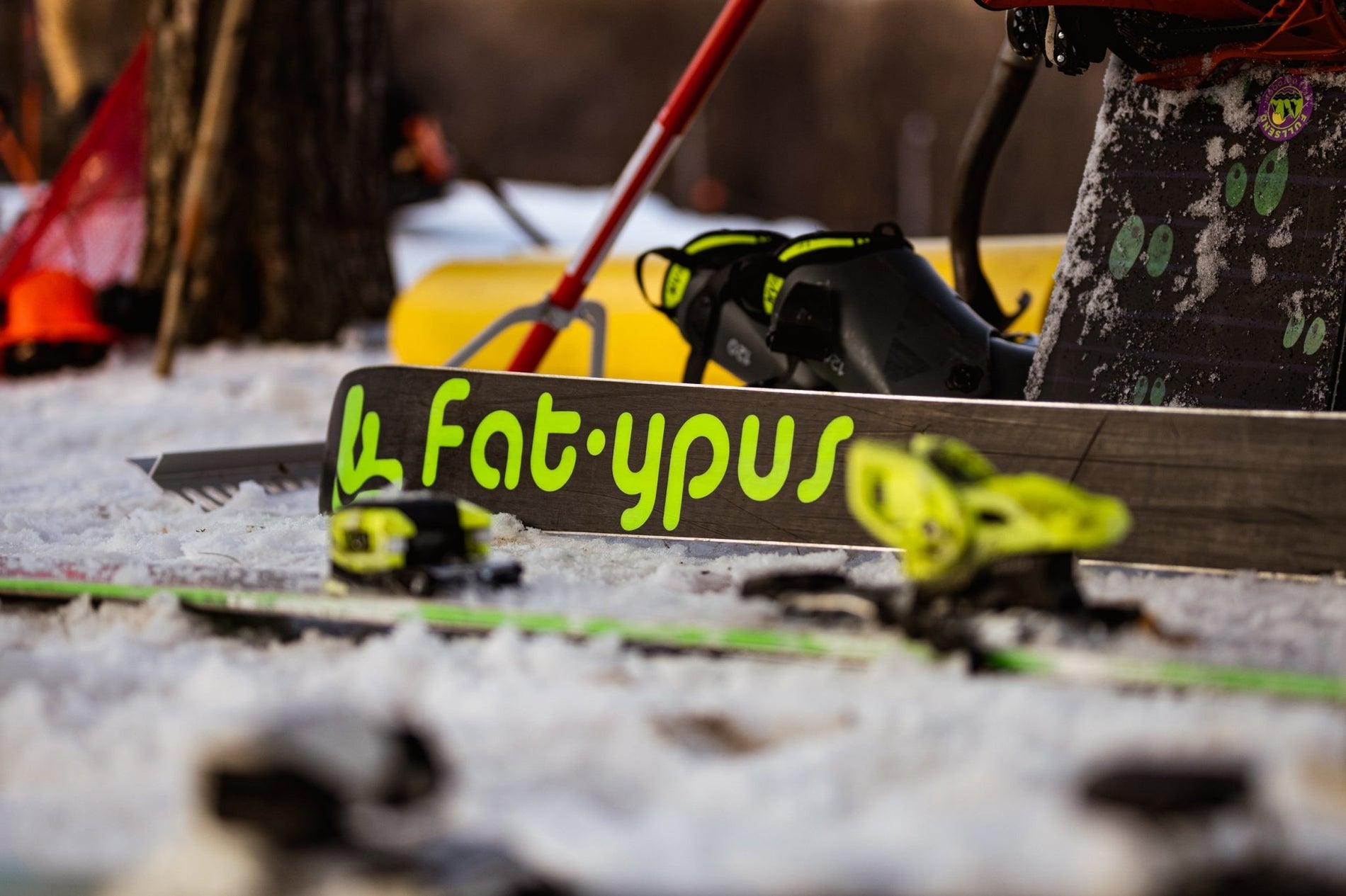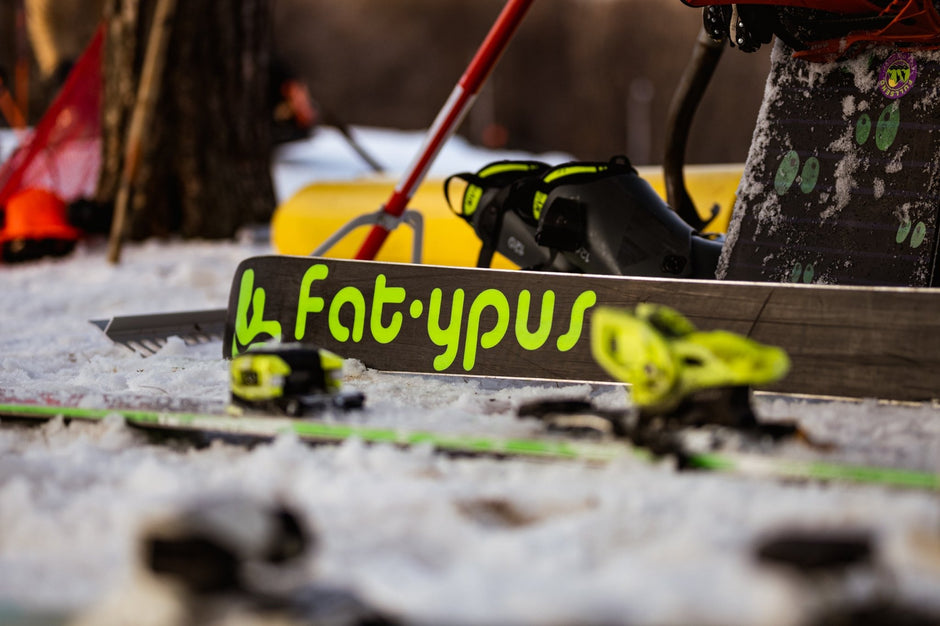Skiing is not just a winter sport, but also a lifestyle. One of the essential aspects of skiing is choosing the right ski type to match your needs and preferences. In this comprehensive guide, we will explore different types of skis, factors to consider when selecting them and how to choose the best one for you.
The Basics of Ski Types
When it comes to skiing, there are different types of skis designed for specific purposes. The most common ski type is alpine skis, which are great for carving on groomed slopes at high speeds. On the other hand, freestyle skis are perfect for performing tricks and jumps in terrain parks or halfpipes. If you enjoy off-piste skiing with deep snow, powder skis provide excellent flotation and maneuverability in soft conditions. Each ski type has its unique features that cater to various skiing styles and preferences.
Powder skis provide excellent flotation and maneuverability for off-piste skiing in deep snow.
Additionally, choosing the right width and length of your ski can also affect your overall experience on the slopes. For instance, wider skis offer better floatation in deep snow but may not turn as easily as narrower ones. Meanwhile, longer skis provide stability at higher speeds but require more effort to control than shorter ones. It's essential to consider both your skill level and intended use when selecting a pair of ski types that suit you best.
1. Alpine Skis
Alpine skis are designed for skiing on groomed slopes and provide great stability and control at high speeds. They come in different shapes, sizes, and stiffness levels to cater to varying skill levels. Here are some key features of alpine skis:
- Narrow waists for easy turning
- Stiffness for better edge control
- Camber profile for improved grip on hard snow
Some subcategories of alpine skis include carving skis, which have a smaller turn radius; powder skis, which have wider waists for better floatation in deep snow; and freestyle skis, which are shorter with twin tips allowing the rider to ski backwards or perform tricks in the park. As an expert ski enthusiast or a beginner looking to make your first purchase, it is important to know these differences before investing in a pair of alpine skis.
2. Freestyle Skis
Freestyle skis are designed for those who want to show off their skills in the park and pipe. These skis are shorter, wider, and more flexible than traditional carving or powder skis. They have a twin-tip design that allows for backwards skiing and tricks such as spins, jumps, and rails.
When selecting freestyle skis, consider your skill level and the type of terrain you will be skiing on. Beginners should look for softer flexing skis with a narrower waist while advanced riders might prefer stiffer flexing freestyle powder skis with a wider waist to handle harder landings on bigger jumps. Whatever your preference may be, there is no denying that freestyle skiing can take carving turns or finding lines to an entirely new level of excitement!
3. Powder Skis
Powder skis are designed to make the most of deep snow conditions. They feature a wider waist and rocker profile that helps them float effortlessly through powder, providing maximum stability and control. Powder skis are perfect for experienced skiers who love exploring off-piste terrain.
Carving skis, on the other hand, have a narrower waist and shorter turning radius than powder or freestyle skis. They are great for carving turns on groomed runs at high speeds. Freestyle skis are ideal for park enthusiasts who enjoy performing tricks and jumps in the terrain park or halfpipe. With their twin-tip design, they allow you to ski switch easily both forwards and backwards while maintaining balance in all directions.
4. Backcountry Skis
Backcountry skis are designed for off-piste skiing and cater to adventurous skiers who want to explore the backcountry. These skis come in a variety of shapes and sizes, with some featuring wider waistlines ideal for floating on deep powder snow while others boast narrow waists that make it easier to climb steep terrain. For those looking for more control over their turns, carving skis can be used in the backcountry but may not perform as well in deep powder compared to specialized powder skis.
If you're into freestyle skiing in the backcountry, there are also freestyle-specific options available that allow you to take your tricks off of natural features like rocks or cliffs. Regardless of which type of ski you choose, it's important to have proper training before heading out into the backcountry because this type of skiing comes with its own unique set of risks and challenges.
5. Cross-Country Skis
Cross-Country Skis:
When it comes to cross-country skiing, there are a few important factors to consider before choosing the right pair of skis. Here are some key things to keep in mind:
- Ski length is crucial and depends on your height and weight
- The type of terrain you'll be skiing on will determine whether you need classic or skate skis
- Skate skis require more technique and fitness than classic skis
- Waxable vs. waxless options come down to personal preference
No matter what type of cross-country skiing you plan on doing, make sure to invest in a quality pair of boots and poles that match your skill level. Happy trails!
What is the difference between carving and free-riding skis?
When it comes to skiing, there are many different styles and techniques that can be used. Two popular types of skis are carving skis-riding skis. While both types of skis are designed for downhill skiing, there are some key differences between them.
Carving skis are designed to make precise turns on groomed slopes. They are typically narrower and have a shorter turning radius than free-riding skis. This means that they can make quick, sharp turns with ease. Carving skis are also stiffer than free-riding skis, which helps to transfer energy from the skier's legs to the ski and maintain control at high speeds.
Free-riding skis, on the other hand, are designed to handle a variety of terrain and snow conditions. They are typically wider than carving skis, which provides more stability and flotation in deep snow. Free-riding skis also have a longer turning radius, which allows for smoother turns at higher speeds. They are often more flexible than carving skis, which makes them more forgiving on uneven terrain.
In summary, the main difference between carving and free-riding skis is their purpose. Carving skis are designed for precise turns on groomed slopes, while free-riding skis are designed to handle a variety of terrain and snow conditions. Choosing the right type of skis will depend on your skiing style and the conditions you will be skiing in.
Factors to Consider When Choosing a Ski Type
When selecting a ski type, terrain should be considered as it affects the choice of ski length and width. Steeper slopes require shorter skis for better maneuverability while wider skis are more stable on soft snow found in powder conditions. In contrast, narrower skis perform better on hard-packed or icy terrain.
Skill level is another important factor to consider when choosing a ski type. Skiers with beginner or intermediate skills may benefit from all-mountain skis that offer versatility across different terrains. However, advanced and expert-level skiers who prefer to tackle specific types of terrain such as moguls or backcountry skiing may opt for specialized ski types designed for those conditions.
Additionally, snow conditions play a crucial role in determining the optimal ski type. For instance, powder-specific skis have wider bases suited to deep snow while carving-skis provide superior edge control on groomed runs. Choosing the right equipment based on these factors can significantly improve your skiing experience by ensuring optimal performance in any given situation.
1. Terrain
The type of ski you choose to use should be carefully selected based on the terrain you'll be skiing on. Here are some key factors to consider when selecting skis for specific terrains:
- Steep and Icy Terrain:
- For this type of terrain, a ski with sharp edges that can grip into the ice is necessary. Look for skis with a narrow waist and strong torsional rigidity.
- Powder Terrain:
- When skiing in deep powder, wider skis provide more surface area and make it easier to float above the snow. Look for fat or powder-specific skis with rocker technology.
Remember, different types of terrains require different types of skis!
2. Skill Level
When it comes to choosing the right ski, understanding your skill level is crucial. Beginner skiers should opt for shorter and more flexible skis that are easier to turn. Advanced skiers, on the other hand, can handle longer and stiffer skis that provide better stability at high speeds. It's important to be honest about your abilities in order to select a ski type that matches your needs.
Intermediate skiers often find themselves caught between two extremes - they've outgrown beginner-level equipment but aren't quite ready for expert-level gear yet. In this case, narrow-to-medium width all-mountain skis are a great option as they offer versatility across different terrain types while still being forgiving enough for those occasional mistakes on the slopes.
3. Snow Conditions
Snow conditions are an important consideration when choosing the right type of ski for your needs. Powder skis, for example, are designed to perform well in deep snow and soft conditions. These skis typically have a wider profile and longer length than other types of skis, which helps them float on top of the snow. On the other hand, if you're skiing on hard-packed or icy slopes, you may want to consider a pair of carving skis. These skis have a narrower shape that allows them to carve precisely through firm snow and maintain good edge control.
When selecting your ski type based on snow conditions, keep in mind that some models are designed specifically for certain types of terrain or weather patterns. For instance, all-mountain skis can handle various kinds of snow but may not excel at any particular one while backcountry touring skis are optimized for uphill travel with skins and can surface powder even with their narrow waistlines due to extra rocker design features which make it easier to turn quickly in tight spaces like trees or rocky outcroppings as well as offering a lightweight package overall making long ascents less painful than traditional alpine touring gear setups would be over extended periods since they often weigh more by comparison so choose wisely!
4. Ski Length and Width
When it comes to ski length and width, there are a few factors to consider. Generally speaking, longer skis provide more stability at high speeds and in deep powder snow, while shorter skis offer greater maneuverability for quick turns on groomed runs or in tight spaces. As for width, wider skis provide better flotation in deeper snow but may be less agile on hard-packed terrain.
It's important to choose the right ski length and width based on your skiing style, skill level, and the conditions you'll be skiing in. A professional fitting at a reputable shop can help ensure that you have the best equipment for your needs.
How to Choose the Right Ski Type for You
Before hitting the slopes, it is crucial to choose the right ski type for your skiing style. The first step to choosing the right ski type is consulting with a ski expert who can guide you through the process. Renting skis is also an excellent way to test different types of skis and determine which one suits you best. Finally, researching ski types online can provide valuable insights into various skis' performance characteristics, helping you make an informed decision that fits within your budget.
1. Consult with a Ski Expert
When it comes to choosing the right ski for you, consultation with a ski expert should be your first step. An experienced professional can help you navigate through the different types of skis available in the market and choose one that best suits your skiing level and style. They can also provide valuable insights on factors such as size, shape, flex pattern, camber profile, and materials used.
In addition to helping you make an informed decision about purchasing or renting a ski, consulting with a ski expert will also ensure that you have proper equipment maintenance and storage practices in place. This will not only extend the life of your skis but also optimize their performance over time. So before hitting the slopes this winter season or making any major purchasing decisions related to skiing equipment - consult with an expert!
2. Rent Skis
When it comes to renting skis, there are a few things to keep in mind. Firstly, make sure the rental shop has a variety of ski types available, including all-mountain, freestyle and powder skis. Secondly, consider your level of experience when choosing a ski type. If you're a beginner or intermediate skier, opt for an all-mountain ski that's versatile and easy to maneuver. Finally, don't forget about fit - be sure to have your weight and height measurements on hand so the rental shop can provide you with the best fit possible.
3. Demo Skis
Demo skis are a great way to try out different types of skis before committing to a purchase. These skis are typically available at ski resorts or rental shops and allow you to test out the latest models from top brands. When demoing skis, be sure to take note of their length, width, shape, and flex as these factors affect how they perform on the slopes.
It's important to keep in mind that while demo skiing can be helpful in finding your perfect pair of skis, it may not always provide an accurate representation of how they will perform under various conditions. Therefore, it's recommended that you also consult with a ski expert and do some research before making a final decision on which type of ski is right for you.
4. Research Skis
When it comes to finding the perfect pair of skis, research is key. Here are some important considerations to keep in mind:
- Ski type:
- Are you looking for powder skis, all-mountain skis, or something else?
- Length and width:
- The length and width of your skis will impact their performance on the slopes.
- Flex pattern:
- Your skill level and preferred skiing style will influence the flex pattern that's right for you.
- Material composition:
- Different materials can affect a ski's weight, durability, and overall feel on snow.
By taking the time to carefully research your options before investing in new equipment, you can ensure that your next ski purchase meets your needs both on and off-piste.
5. Consider Your Budget
When considering your budget for purchasing skis, it's important to keep in mind that price doesn't always equal quality. While high-end ski types may have all the latest technology and features, there are also affordable options that offer excellent performance. Look for sales or previous season models to save money without sacrificing quality.
Another way to stretch your budget is by investing in versatile ski types that can handle different terrains and snow conditions. All-mountain skis are a great option as they can be used on groomed runs, powder, and even some backcountry terrain. This will allow you to get the most out of your investment without breaking the bank on multiple pairs of specialized skis.
What is the difference between a wide and narrow ski?
The main difference between a wide and narrow ski is their width underfoot. A wide ski typically has a waist width of 90mm or more, while a narrow ski usually has a waist width of 70mm or less.
The width of a ski affects its performance on different types of terrain. A wider ski provides more surface area for better flotation in deep powder, making it a popular choice for freeride skiers who seek off-piste adventures. A narrower ski, on the other hand, is more agile and responsive, making it a great option for carving turns on groomed runs.
In addition to width, there are several other factors that differentiate skis, including their shape, rocker profile, stiffness, and intended use. All-mountain skis are versatile and can handle a variety of terrain, while racing skis are designed for high-speed performance on groomed runs. Freeride skis are wider and more playful, while downhill skis are longer and stiffer for maximum stability at high speeds. Piste skis are specifically designed for carving turns on groomed runs.
Ultimately, the choice between a wide and narrow ski depends on the skier's preferences and the type of terrain they plan to ski on. A wider ski is generally better suited for deep powder and off-piste adventures, while a narrower ski provides better performance on groomed runs.
Conclusion
In conclusion, understanding the different types of skis is crucial for making informed decisions while purchasing or renting equipment. Beginners should consider all-mountain skis, which offer versatility and stability on varying terrains. Advanced and expert level skiers can explore options such as powder skis for backcountry adventures or carving skis for precision turns on groomed slopes. Additionally, considering factors such as ski length, width, flex and rocker can help enhance the skiing experience based on individual preferences and skill levels.
It's important to note that the type of ski alone does not determine one's performance - proper technique and form are equally significant. Choosing a ski that aligns with your skiing style is only one piece of the puzzle; taking lessons from certified instructors can help improve overall skills and safety on the mountain. With this comprehensive guide in mind, you're now equipped to ch







